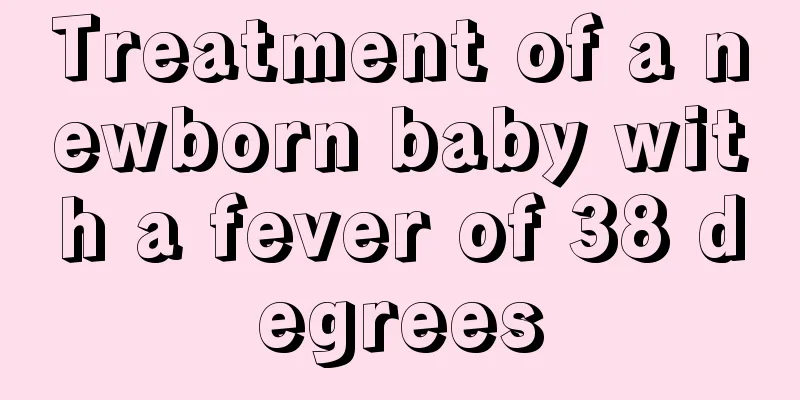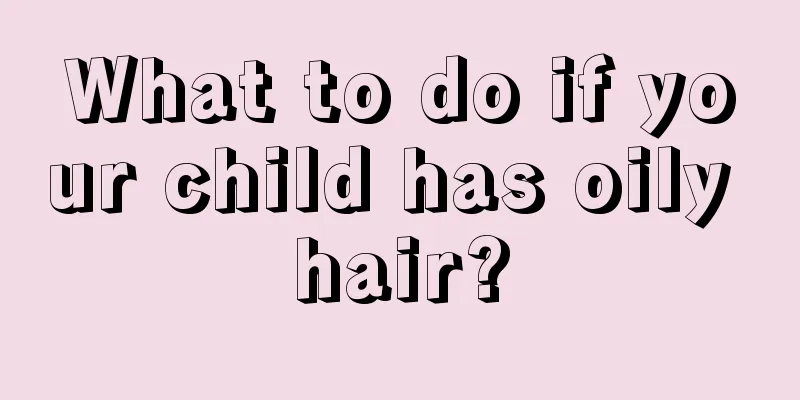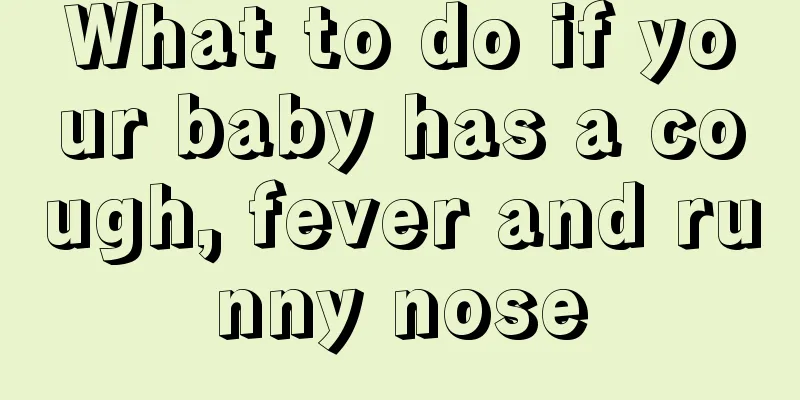Children with fever 38 degrees

|
It is common for children to catch a cold and have a fever as they grow up. However, when a child has a fever, the parents are the most miserable. When the baby is sick, the parents will also feel uncomfortable. Fever is usually divided into low fever and high fever. Once a child has a high fever, parents must send the child to the hospital for relevant examinations and reduce the child's fever in time. If the child has a fever for a long time, it will have a great impact on the baby's brain. What should I do if my child has a fever of 38 degrees? When a baby has a fever, if the baby is less than six months old, he should be sent to the hospital immediately; in general, if the baby's fever is below 38.5℃, it is recommended to use only physical methods to help the baby cool down. Only give your baby antipyretics when the body temperature exceeds 38.5℃. 1. Wear less clothes to allow your child to dissipate heat. The traditional idea is that when a baby has a fever, he or she should be wrapped tightly in a quilt to "force" out the sweat. In fact, this is wrong. When babies have a fever, they shiver because their rising body temperature causes convulsions. 2. Physical cooling of baby's fever: (1) Cold wet compress on the head: Soak a soft towel in 20℃-30℃ cold water, squeeze it slightly to prevent dripping, fold it and place it on the forehead, changing it every 3-5 minutes. (2) Head ice pillow: Fill an ice bag halfway with small ice cubes and a small amount of water, expel the air from the bag, press the bag tightly, and place it on the pillow to prevent any water leakage. (3) Wipe with warm water or take a warm bath: Use a warm, wet towel to wipe the child’s head, armpits, and limbs or take a warm bath, scrub the skin more often to promote heat dissipation. (4) Alcohol bath: suitable for cooling down high fever. Prepare 200-300 ml of 20%-35% alcohol and use it to rub the limbs and back. 3. Drink plenty of water. When a baby has a high fever, his breathing speeds up and sweating will cause the body to lose a lot of water, so parents should give the baby plenty of water when he has a fever, increase urine volume, and promote the excretion of toxins in the body. Baby fever index Every baby will have a fever, but because the baby's physique is different, the baby's fever situation is also different. The normal axillary temperature of a child is between 36 and 37 degrees. If it exceeds 37.4 degrees, it is considered a fever. Under normal circumstances, children's body temperature can fluctuate within a certain range. A body temperature above 37°C is considered a fever. 37.5 degrees to 38.4 degrees is a low fever, and above 38.5 degrees is a high fever. If calculated based on rectal temperature, the normal baby's basal body temperature is 36.9 degrees to 37.5 degrees. Generally, when the body temperature exceeds the basal body temperature by more than 1 degree, it is considered a fever. Among them, low fever refers to body temperature fluctuating around 38 degrees, and high fever refers to body temperature above 39 degrees. Continuous fever for more than two weeks is called long-term fever. Generally speaking, oral temperature is 0.3 to 0.5 degrees lower than rectal temperature, and axillary temperature is 0.3 to 0.5 degrees lower than oral temperature. When your baby has a fever, you should first use physical methods to reduce the temperature. If the body temperature exceeds 38.5℃, then use medication to reduce the temperature. You should also pay attention to providing your baby with comprehensive nutrition to improve his immunity. |
<<: Symptoms of viral fever in children
>>: Children with persistent fever
Recommend
What are the symptoms of autism in children
In life, we see many children suffering from auti...
What's wrong with children not looking like their parents?
It is a very normal phenomenon for a child not to...
How old can children with diarrhea eat steamed eggs?
Diarrhea is a very uncomfortable problem for both...
What should children eat when they have sore throat?
Tonsillitis, sore throat, respiratory tract infec...
What to do if your child has spasmodic cough
People will get sick for some reasons in their li...
What medicine is better for children with indigestion?
Children's gastrointestinal systems are not a...
5. The child often wakes up crying in the middle of the night
As children grow up, they always have various hea...
How to judge irritability in newborns
Irritability This is a type of newborn baby who i...
The later a boy develops, the taller he is
It is mostly not true that the later a boy develo...
What should I do if my child has diarrhea with blood?
Today's children's immunity is not yet pe...
What to do if your child coughs and has a hoarse voice
What should I do if my child coughs and has a hoa...
Solutions to four types of accidental injuries to children
Fever in children Give more water, don't cove...
Is red eyes a disease in children?
Children's eyes are the cleanest things in th...
What should I do if my baby's anus is broken?
The baby's physical health is very important ...
What causes recurrent respiratory infections in children?
Today, the editor will take you to understand the...









